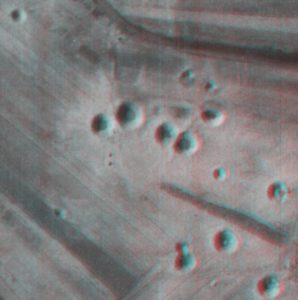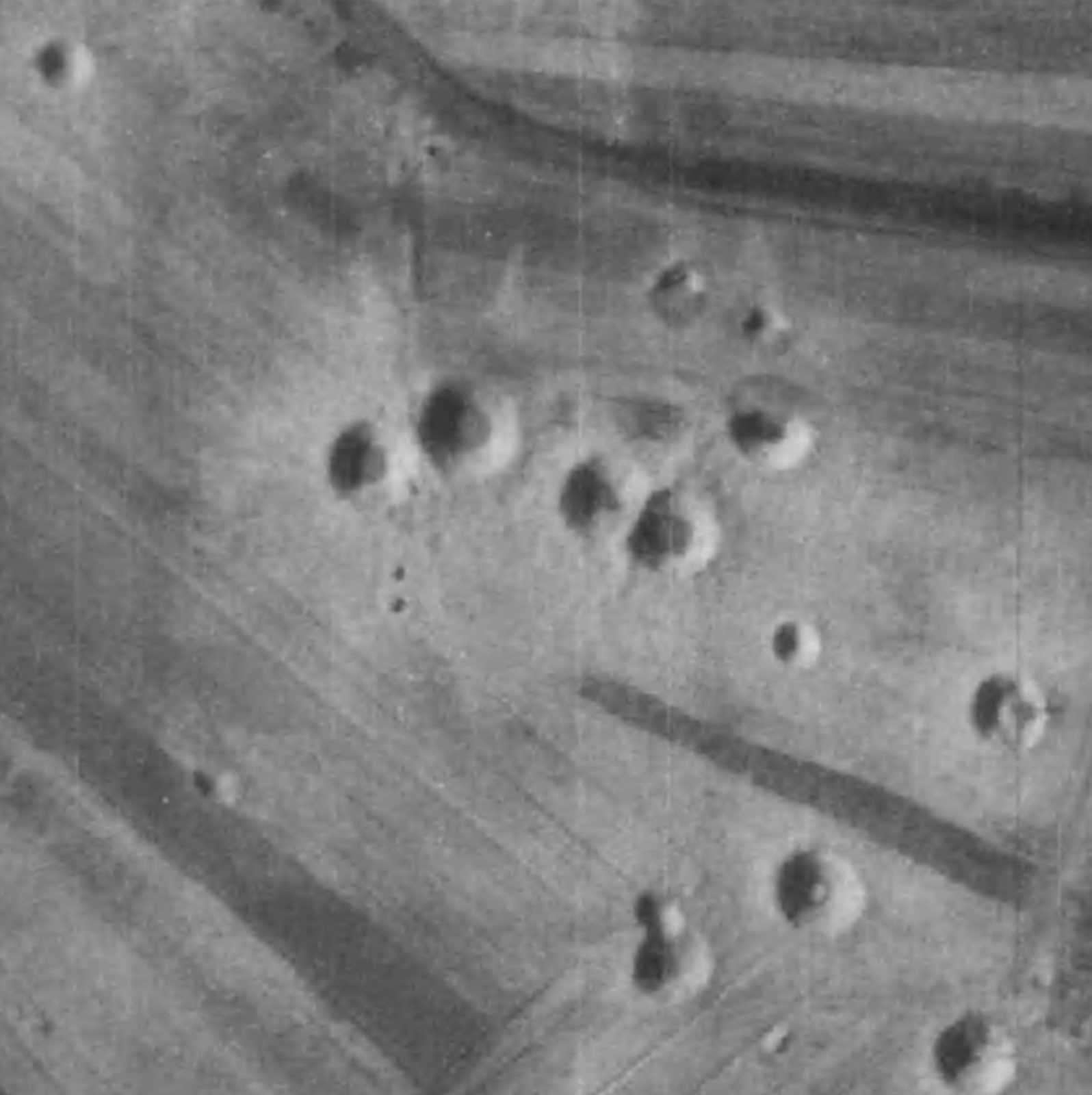Even more than 70 years after the end of the war, there are still numerous explosive ordnance sites underground in the Federal Republic of Germany. In the event of ground intervention, these pose a considerable risk to the protected interests of public safety (in particular life and health, freedom, property of individuals) or public order.
In addition to various types of written sources, historical aerial photographs taken by Allied reconnaissance units in particular are an essential medium for reconstructing and spatially delimiting areas potentially contaminated with explosive ordnance.
Aerial photographs were usually taken in the run-up to attacks to reconnoitre possible targets, but also during or in the aftermath of bombings for "success control". In the BFR KMR (Baufachliche Richtlinien Kampfmittelräumung), aerial photographs are described as "objective "contemporary witnesses" of a region at the time they were taken".
In addition to the effects of Allied bombing (explosive bomb craters, building damage), they show other potentially explosive ordnance-relevant objects and structures such as various types of positions (cover holes, cover trenches, flak positions, etc.), military facilities and areas (airfields, firing ranges, barracks, training areas) or natural cavities in which explosive ordnance may have been placed.
In this context, unexploded bombs are characterised by a particularly high hazard potential due to the amount of explosives they contain. A certain proportion of the bombs dropped were equipped with long-life chemical detonators, which today can be detonated by even minor vibrations.
For this reason, the identification and recording of bombed areas is of particular importance in the course of aerial photo evaluation. Typical aerial photo features of Allied bombing are bomb craters and building damage. If good quality detailed photographs are available, it is sometimes possible to identify suspected unexploded ordnance.
At Mull und Partner, war aerial photographs are evaluated by qualified specialists with many years of experience. The images are usually viewed stereoscopically so that a three-dimensional image impression is created. The three-dimensional image viewing is necessary to avoid misinterpretations - especially in the mapping of suspicious points.
Explosive bomb craters are often already clearly visible in monoscopic images. Depending on the type of bomb and the subsoil, crater-like hollow shapes with diameters of often 5-13 m are visible in the historical aerial photographs. The funnels are often surrounded by a radially outward running "ring". This is mostly soil material that was ejected in the course of detonation. Sometimes, in the centre of the craters, there are material accumulations in the form of solid shapes, which are reminiscent of "sand castles". The rims of the craters are partly bulging like walls and are usually characterised by sharp contours.
The picture examples show several bomb craters of typical shape. With the help of simple red-cyan glasses, the funnels shown in the left section of the image can be viewed three-dimensionally.

Links to sources: Construction Guidelines Explosive Ordnance Disposal (bfr-kmr.de)



